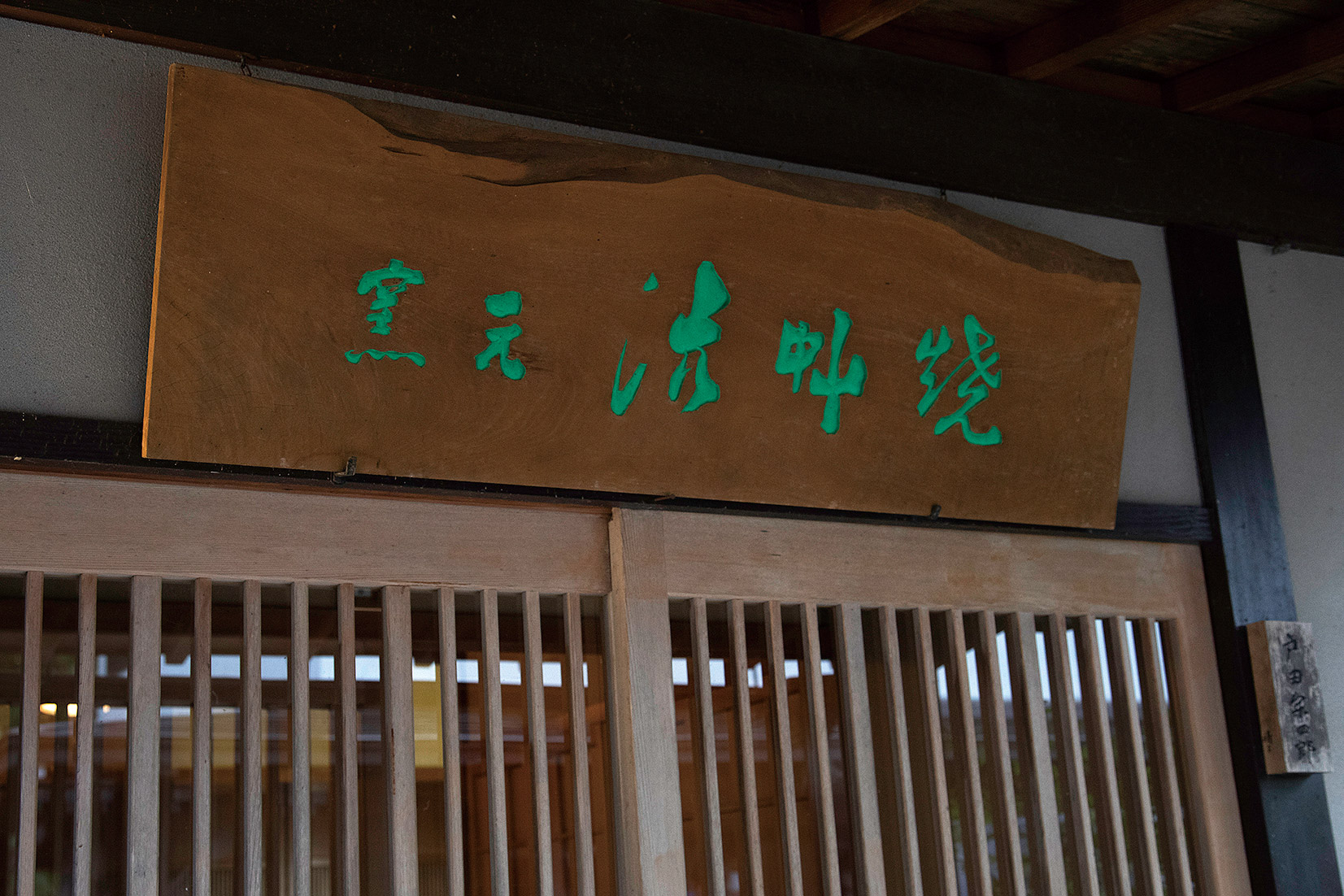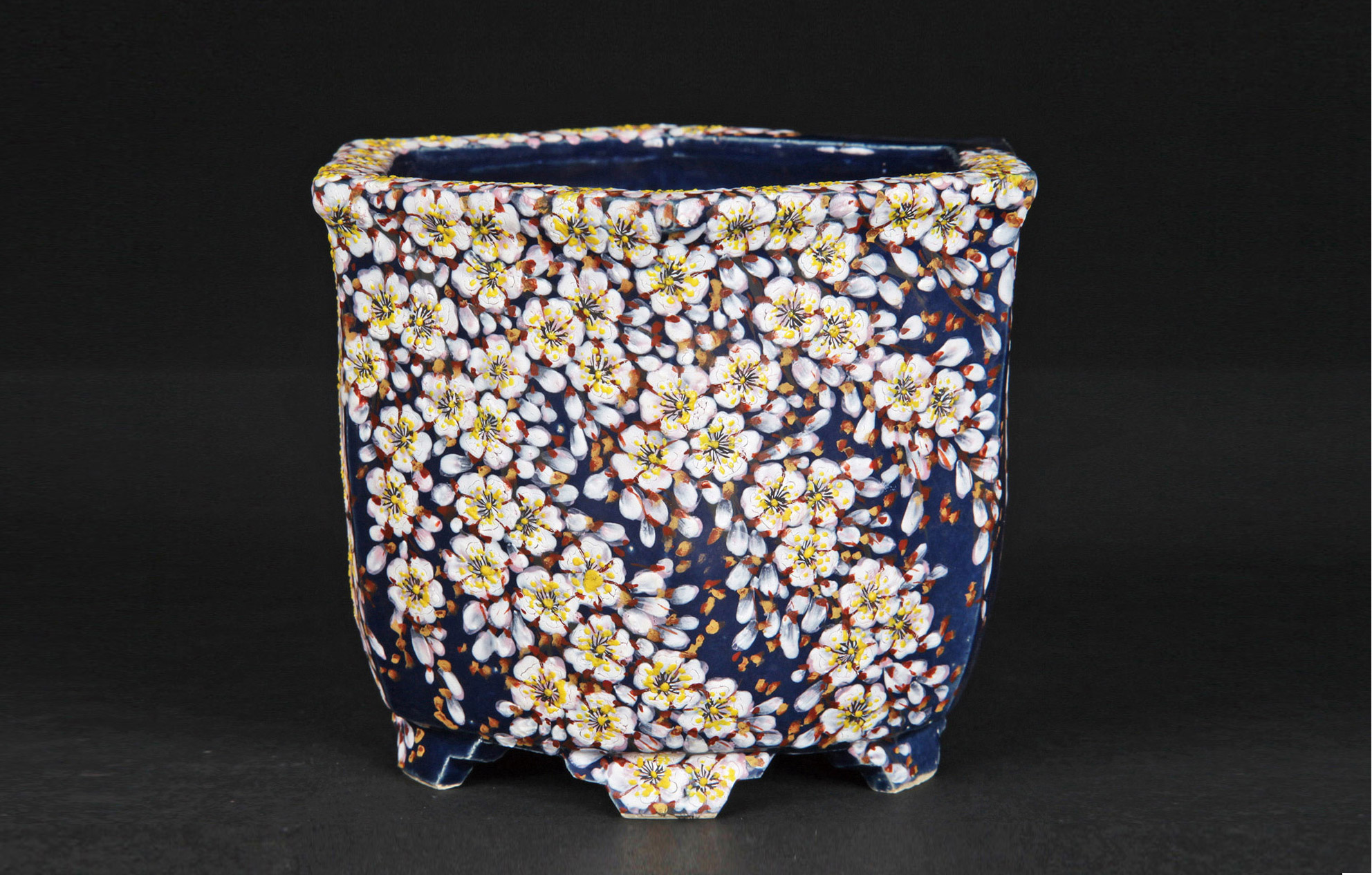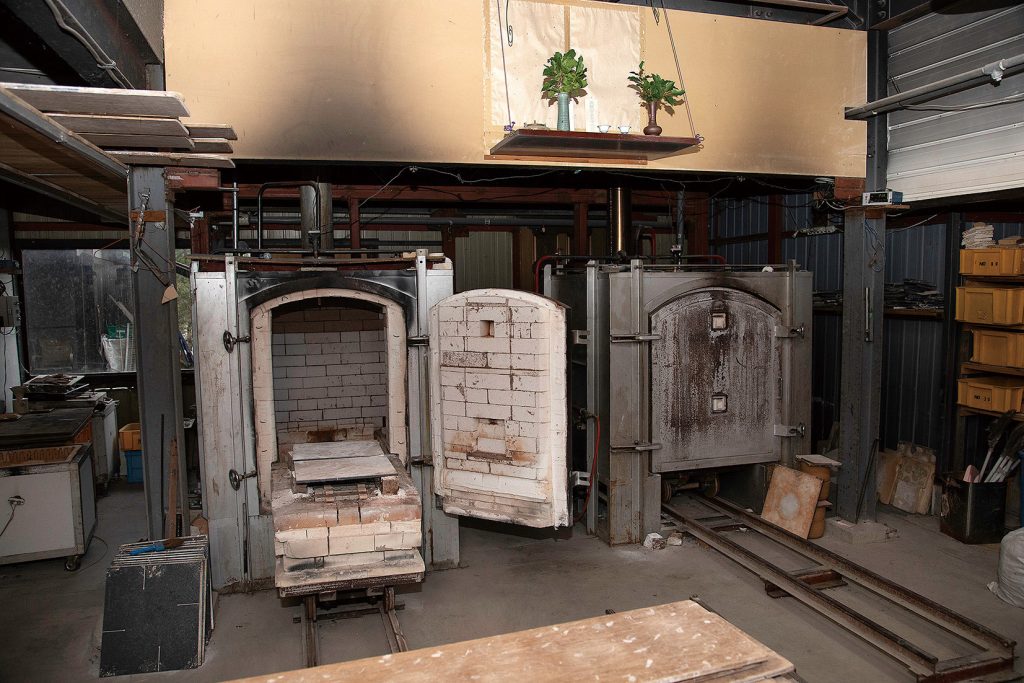
Gas kiln in the pottery studio. The bonsai pots are fired here. There is a wood-fired kiln in a neighboring village, so all firing methods, including oxidation firing and reduction firing, whether it be for porcelain or ceramics, are possible.
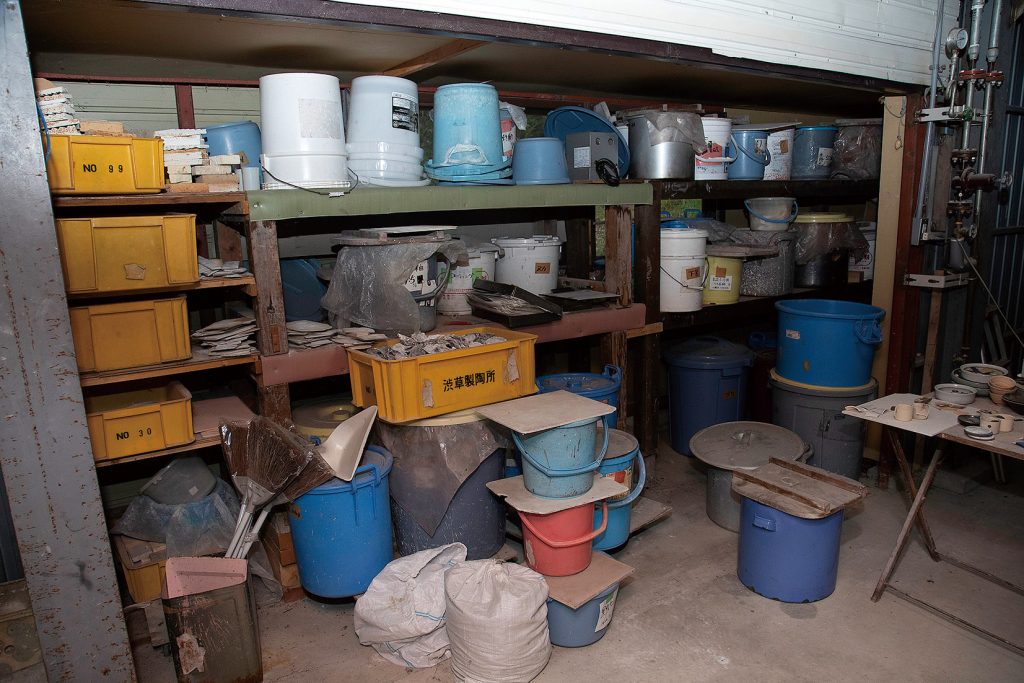
The glazes are all produced by the studio, with hundreds of varieties all stored in-house.
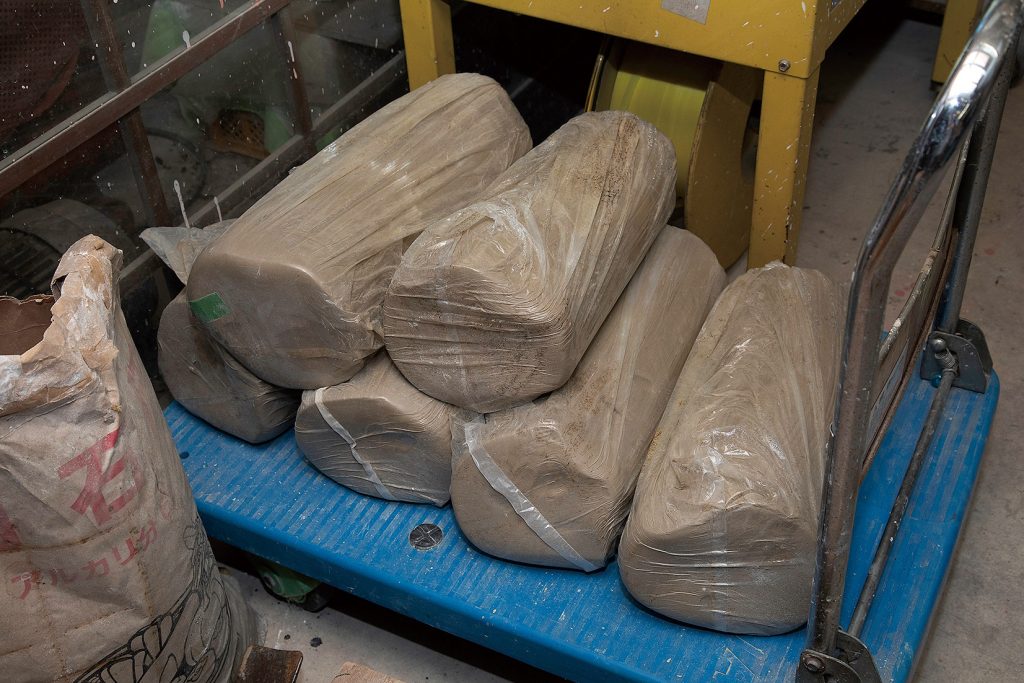
Paste from Hida has been used throughout the generations. The studio’s tradition and commitment to craftsmanship extends to the clay, soil for the glaze, wood ash, and minerals it uses.
History of Shibukusayaki and Ryuzo Pottery
In 1841, toward the end of the Edo period, a semi-governmental studio was opened in a place called Shibukusagaoka in Hida Takayama, to which Toda Ryuzo, a potter from Owari, was invited. After some time, good quality pottery stones were discovered nearby, and after much effort, he succeeded in firing porcelain. The studio subsequently brought in painters from Kaga-Kutani and produced excellent wucai, nanking akae (a pottery style developed toward the end of the Ming Dynasty with red used as the prominent color), and copies of ko-Blue and white porcelain (“ko” meaning “old” and “Blue and white porcelain” meaning “blue and white pottery”) following the late Ming style. These works came to be called “Hida-Kutani” and were famous throughout Japan, but with the death of Toda Ryuzo in 1865 and the end of the Edo shogunate in 1867, the studio lost its support and was forced into decline. However, in 1878, local volunteers took over the business and reestablished it. The studio started making a variety of works by adopting techniques from famous pottery studios across Japan and was named Houkokusha, and it gained worldwide recognition and popularity after being exhibited at the Paris Exposition.
In 1885, three skilled craftsmen of Houkokusha left the studio to start their own business, and of them, Sobei Matsuyama assumed the name of Toda Ryuzo 2nd. Since then, Shibukusa Ryuzo Pottery has established its name over the years while exploring a new world of Shibukusayaki based on the traditions of its founder, Toda Ryuzo.







